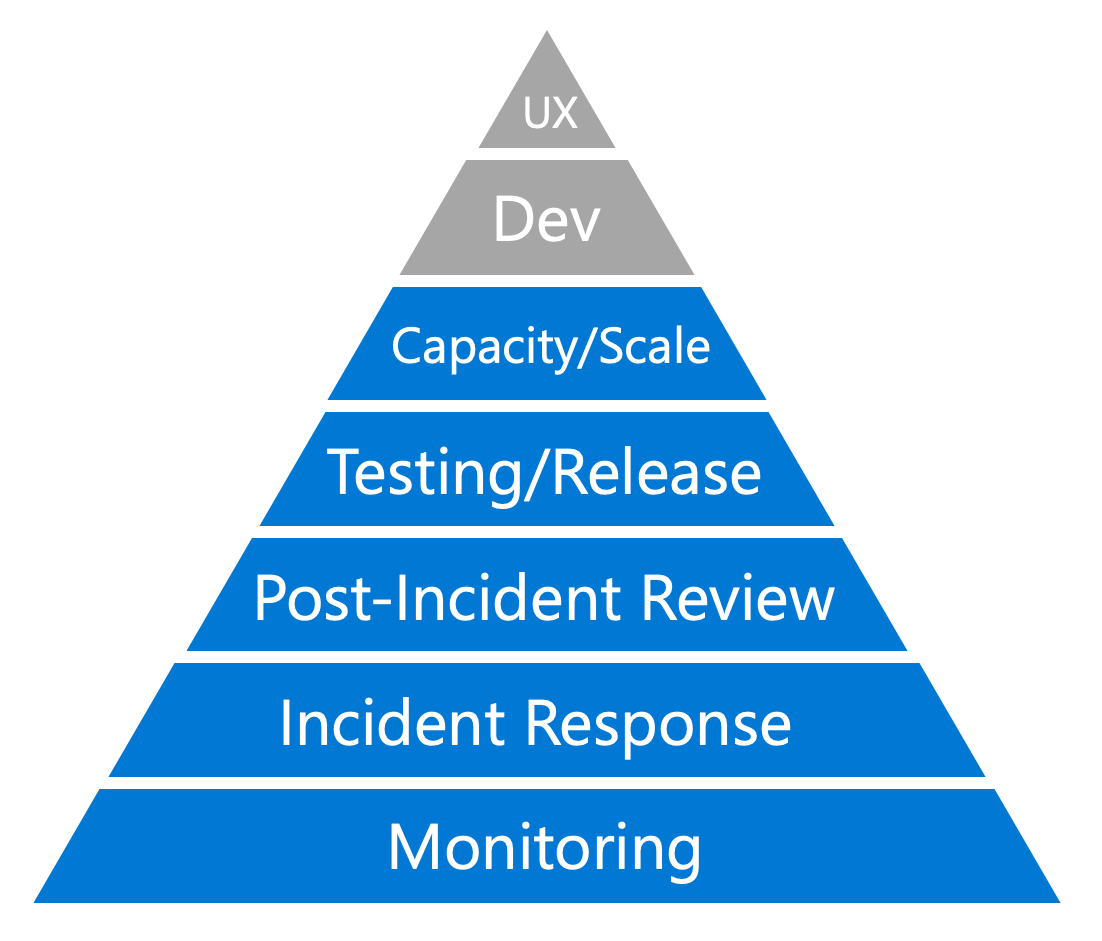The Dickerson hierarchy of reliability
The map for the Improve your Reliability learning path is based on a model from the site reliability engineering world called the Dickerson Hierarchy of Reliability. Mikey Dickerson was an SRE who became the founding administrator of the United States Digital Services. He created this hierarchy while facing one of the largest reliability crises ever.

The model is patterned after Abraham Maslow's hierarchy of needs, which addresses human motivation. As with Maslow's hierarchy, to progress up the hierarchy you need to make sure that each of the lower levels has been addressed first. The levels on which we focus in this learning path, from bottom to top, are:
Monitoring
This level is the important foundation on which the other levels rest. It's the source of information that allows you to have concrete conversations about reliability in your organization around objective data. When you make changes, this practice is how you know the effect. In even starker terms, this practice is how you know whether things are getting better or not. Until you're solid on monitoring, you can't get the rest of the work done.
Incident response
Every production environment has an outage of some sort. There's no disputing this fact. The questions then become "what do you do when an incident occurs? What happens when systems are down and customers are impacted?" You need a standard process that is effective at triaging the problem, getting the right resources engaged, and then mitigating the issue. At the same time, you also want to make sure you're communicating with stakeholders about the problem.
Post-incident review (learning from failure)
This process allows us to level up our operations practices by collectively investigating, reviewing, and discussing the experience of each significant incident. Post-incident review allows us to learn from failure and is crucial to reliability work.
Testing/release (deployment)
The next level up is a focus on our testing, release, and deployment processes. You can think of this level as "how good are you at creating the systems and processes that can catch problems before they cause incidents?"
Capacity planning/scaling
Success and the growth that comes with it, can be just as much a threat to reliability as any problem with a system. A customer can't tell the difference between a system that's down because there's a bug in the code, and one that's down because it's unable to handle the load of too many people trying to simultaneously access it. This level of the hierarchy directs us to pay attention to capacity planning and scaling as ways of addressing that threat.
Dev process and user experience
There are two more levels in the hierarchy that aren't addressed in the Improve your Reliability learning path: the development process and the work that goes into making a good user experience (UX). These two subjects aren't discussed in the Improve your Reliability learning path, but other good Learn modules on these subjects are available.
We have created a separate Learn module for each level in the hierarchy of reliability. We hope you join us for all five modules in this learning path.